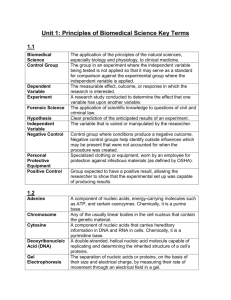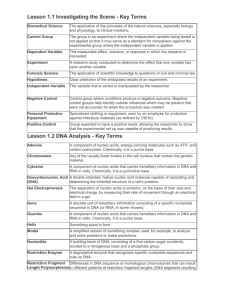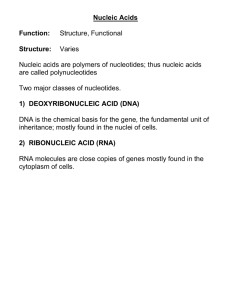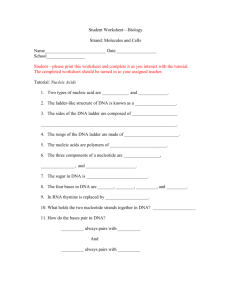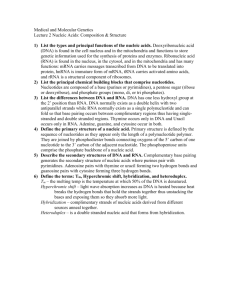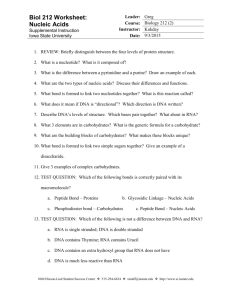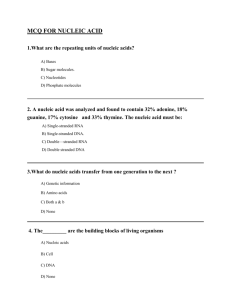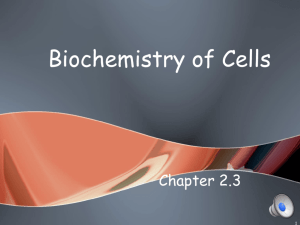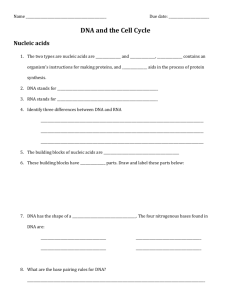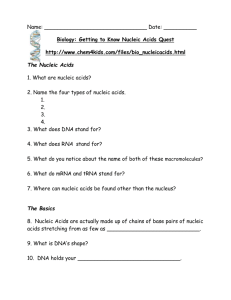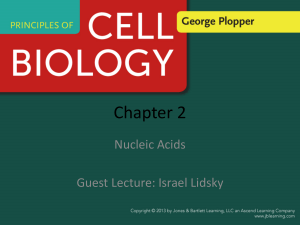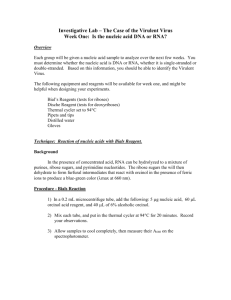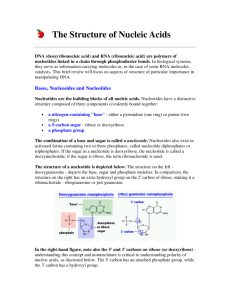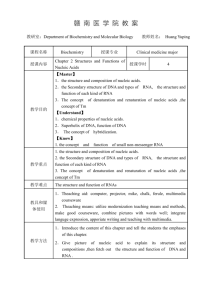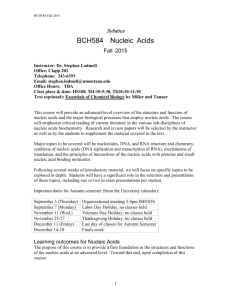Key Terms - Fall River Public Schools
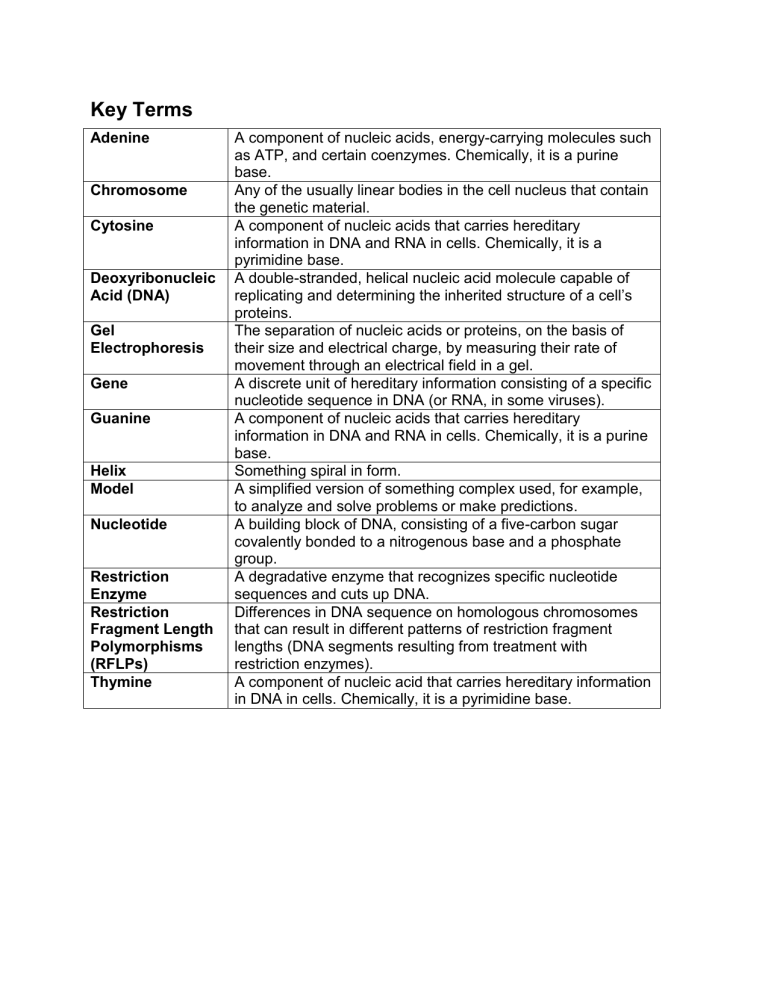
Key Terms
Adenine
Chromosome
Cytosine
Gel
Electrophoresis
Gene
Guanine
Helix
Model
Restriction
Enzyme
Restriction
Fragment Length
Polymorphisms
(RFLPs)
Thymine
Nucleotide
Deoxyribonucleic
Acid (DNA)
A component of nucleic acids, energy-carrying molecules such as ATP, and certain coenzymes. Chemically, it is a purine base.
Any of the usually linear bodies in the cell nucleus that contain the genetic material.
A component of nucleic acids that carries hereditary information in DNA and RNA in cells. Chemically, it is a pyrimidine base.
A double-stranded, helical nucleic acid molecule capable of replicating and determining the inherited structure of a cell’s proteins.
The separation of nucleic acids or proteins, on the basis of their size and electrical charge, by measuring their rate of movement through an electrical field in a gel.
A discrete unit of hereditary information consisting of a specific nucleotide sequence in DNA (or RNA, in some viruses).
A component of nucleic acids that carries hereditary information in DNA and RNA in cells. Chemically, it is a purine base.
Something spiral in form.
A simplified version of something complex used, for example, to analyze and solve problems or make predictions.
A building block of DNA, consisting of a five-carbon sugar covalently bonded to a nitrogenous base and a phosphate group.
A degradative enzyme that recognizes specific nucleotide sequences and cuts up DNA.
Differences in DNA sequence on homologous chromosomes that can result in different patterns of restriction fragment lengths (DNA segments resulting from treatment with restriction enzymes).
A component of nucleic acid that carries hereditary information in DNA in cells. Chemically, it is a pyrimidine base.
